Design Collective Reimagines the Workflow of Next-Gen HQs
LA-based design collective, RIOS, incorporates branding and wellness concepts into bespoke programmatic configurations for top US companies such as GoodRx, Vrbo, and Spotify.
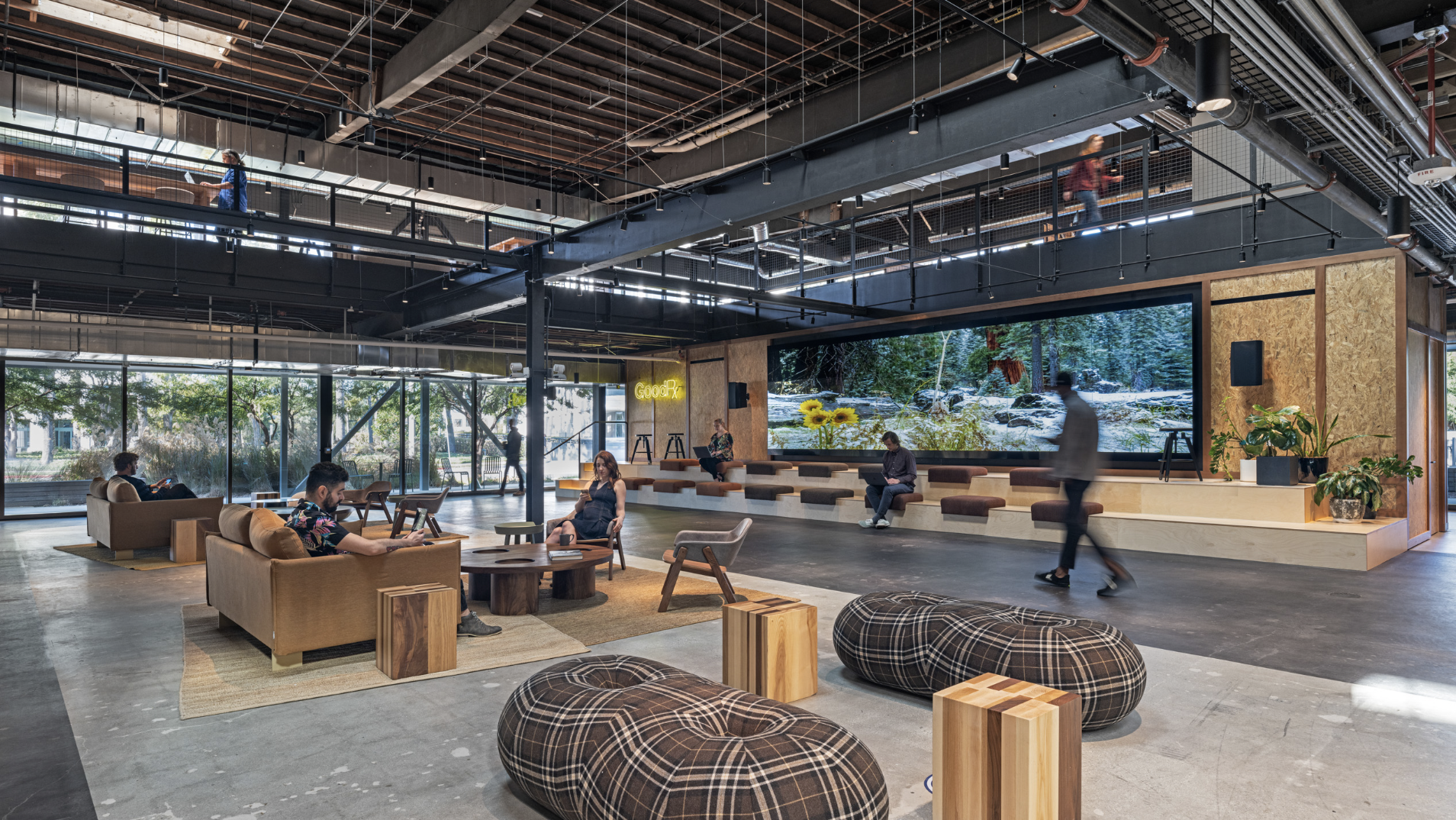
As companies across the globe continue to grapple with the reality of a workforce that has become accustomed to the lifestyle benefits of long-term work-from-home and hybrid models, the shortcomings of the traditional office model have never been more apparent. Seeing an opportunity to upend these standards, forward-thinking LA design collective RIOS has been reinventing the work experience by creating dynamic, livable office spaces designed to promote a higher quality of life through qualitative approaches to workflow, branding, and culture. These boundary-pushing tendencies have come to fruition in recent high-profile headquarter designs for leading companies like GoodRx, Vrbo, and Spotify that exemplify the firm’s boundary-pushing approach to the next generation of office spaces.
Fostering Positive Workplace Culture
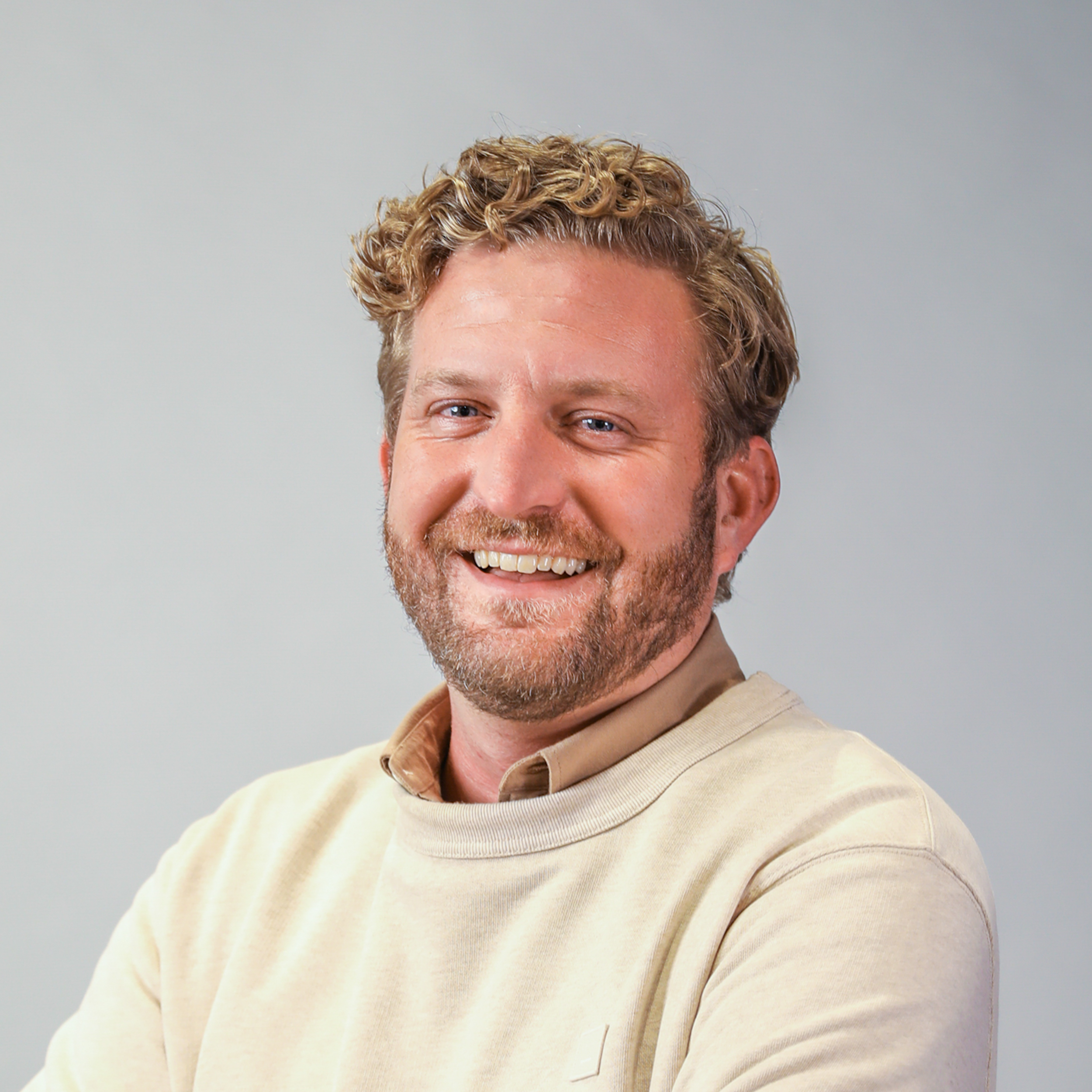
“Marrying the buildout experience with the culture and the feel of the brand encourages a more fluid experience in the workplace, and in our experience fosters a more positive workplace culture.”
Before the Pandemic disrupted the workplace, RIOS understood the value in shaking up the traditional standard to find unique and contemporary solutions. Reconfiguring the workflow to create a living embodiment of a brand and encouraging a community-oriented approach to work has been a driving concern of Andy Lantz, Creative Director, and Partner at RIOS. He sees the future beyond the stereotypical rows of cubicles and fluorescent lighting that have defined offices in popular culture for generations. With out-of-the-box thinking as the norm, Lantz and his team have carefully examined how design can best support the productivity and positive morale of employees while also creating a living embodiment of a brand that promotes an engaging work culture. “
GoodRx
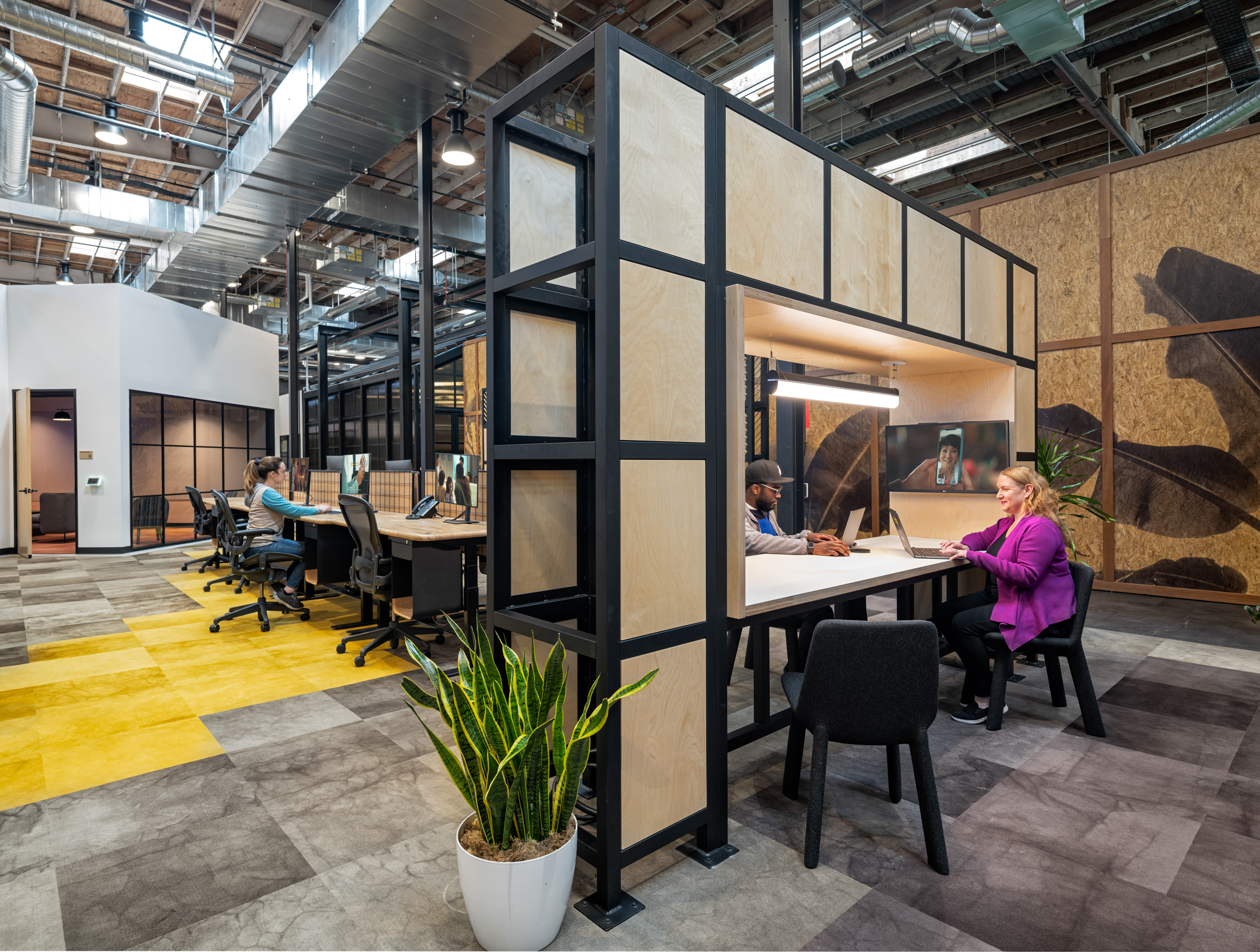
With every client we start from a process that focuses on the qualitative components of a workplace,” he said. “Marrying the buildout experience with the culture and the feel of the brand encourages a more fluid experience in the workplace, and in our experience fosters a more positive workplace culture.”
This was a successful approach for GoodRx, a leading healthcare and technology company, which desired an actionable expression of their sunny and wellness-focused brand in their new Santa Monica warehouse space. To achieve this purpose-driven mission, RIOS incorporated a main street fluid walking experience with ample natural light that moves between a series of episodic environments that feel welcoming yet stylized and create serendipitous and intimate moments for employees to connect. “Fundamentally in the work that we do, we try to disrupt the workplace by celebrating the community as a whole for their differences by diversifying those areas where people feel like they can work, anywhere but their desk,” Lantz said. “For GoodRx, this approach encouraged more communication in their workspace and created a noticeable positive cultural shift that we see as indicative of where the design of these spaces is going in the future.”
Vrbo
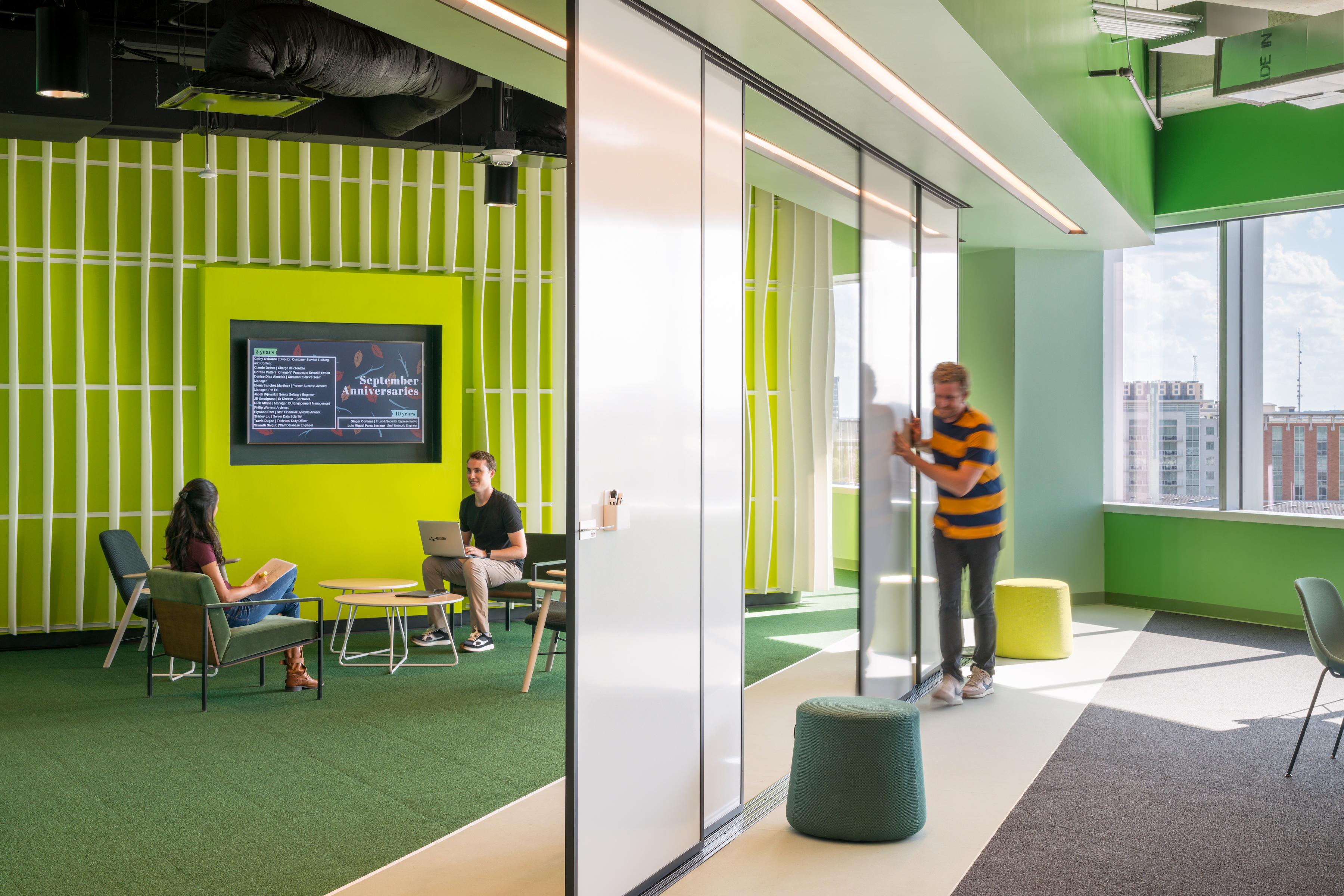
With client Vrbo, the online vacation rental marketplace, they imagined a scientific interpretation of their brand to create a House of Science where data, technology, and ecology would merge and connect their employees within one building. Previously, Vrbo employees were spread across multiple locations in Austin, TX, which hindered the efficiency of circulating ideas and harboring meaningful collaborations. After examining the qualitative data and leveraging focus groups to uncover the way people work, Lantz and his team created a design that interconnects every floor of the 315,000 square-foot and nine-floor environment to promote intra-office travel with programmatic spaces for teams to meet. Vrbo’s workplace is designed around five ecosystems that offer a controlled sense of color, articulation, and furnishings that evoke the emotion and feeling behind familiar places that are the building blocks of travel experiences and foundational elements of a scientific worldview. Additionally, each malleable workspace is equipped with a custom-designed collaboration table, Spark, developed to conduct quick stand-up meetings out in the open to harness the spark of creativity. “With the Vrbo headquarters, there was an opportunity to consolidate both geographically and culturally,” he said. “By embracing that desire through design and letting it guide the experience, we were able to foster better cultural engagement.”
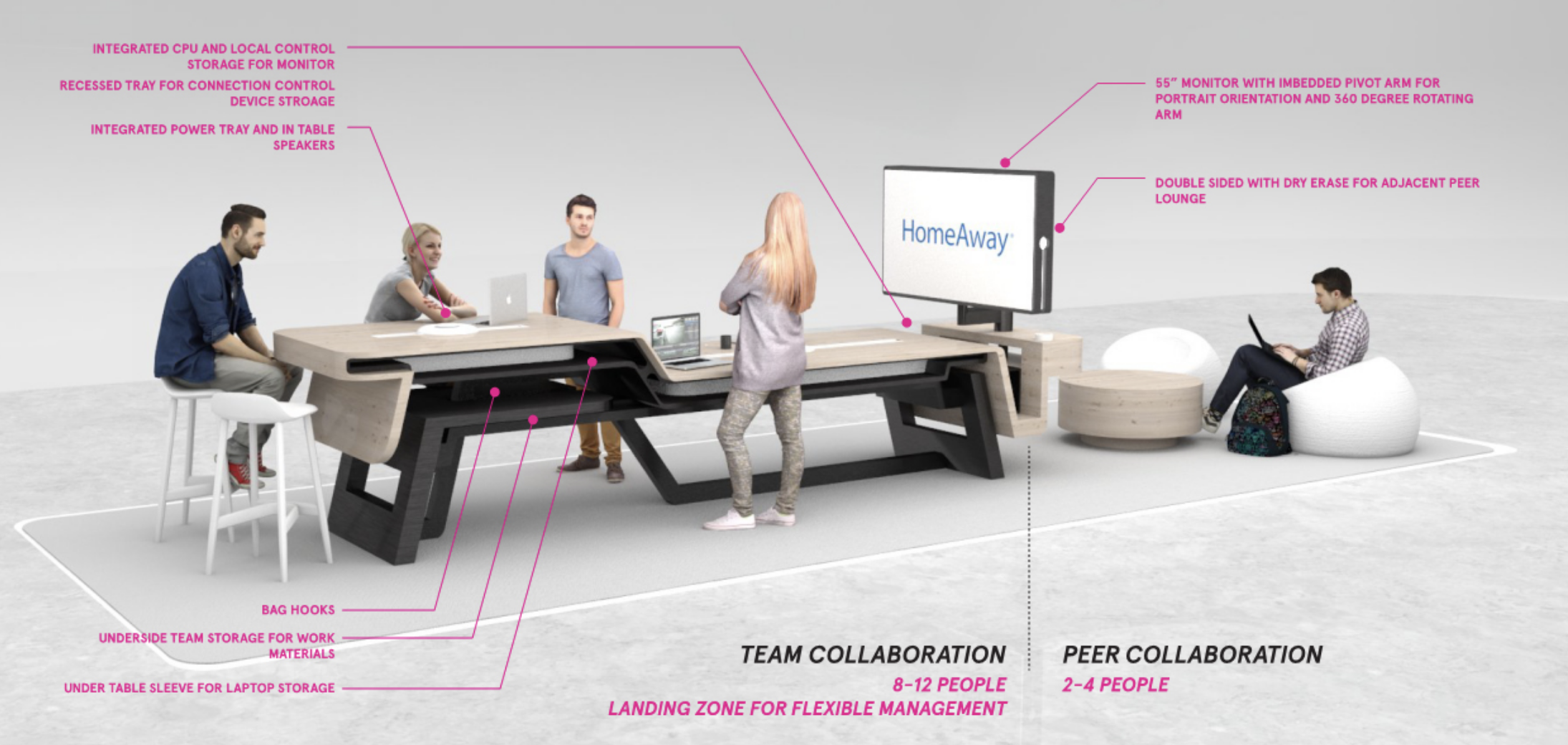
Revolutionizing the Workplace from Within
RIOS is no stranger to the benefits of a customized workspace, having designed their own Los Angeles headquarters to be the living embodiment of its company culture. At the onset of the pandemic, the design collective took the opportunity to experiment further with these concepts and worked to evolve their sensibility towards hybrid work environments that benefited their creative processes. Putting these philosophies into practice allowed them to evolve their offices towards a more purposeful model that emphasized flexibility, celebrated technology, and designed meaningful collaborative experiences. “Since the pandemic hit, the push to revolutionize work to be less binary has never been greater,” Lantz explained. “We saw this firsthand with our own offices and chose to engage with this problem in a holistic way that would prioritize the quality of in-person engagement while also giving us the flexibility to collaborate remotely with team members here in the United States, Europe and Asia. Ultimately these solutions are not pandemic specific, but they’ve given us an opportunity to change how we do things for the better—both in our own offices, and in the spaces we design for our clients.”
A daily selection of features, industry news, and analysis for tech managers. Sign up below.
With the slow return to normalcy underway and additional projects on the horizon, Lantz says that the future of workflow will ultimately be determined by a willingness to engage with the roots of company culture and using that as a springboard to create more equitable and inspiring workplaces. “We’re committed to envisioning solutions to these challenges that celebrate a diversity in design, balance, and ways of working—aspects that can be drawn from the culture of these organizations in very unique ways,” he said. “Having that vision allows each solution to have a meaningful impact on the workplace experience, and ultimately create amazing new spaces that are by you, for you, and inspire a better workflow for everyone.”
The staff of AV Technology serves the community of decision-makers comprising AV/IT technology managers and directors, instructional technologists, and anyone making or influencing AV/IT technology decisions within their respective facilities and institutions.
